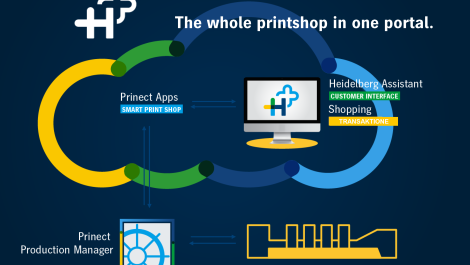The weekly Verdigris blog by Laurel Brunner
Preaching to the converted has always seemed a little self-indulgent. And since the converted already agree with you (mostly), what’s the point? In the printing and publishing industries we unfortunately have a fragmented voice, when it comes to teaching print media’s sustainability to markets and consumers. Teaching’s too heavy a word, raising awareness is better. Whatever we call it, as an industry we should be promoting the sustainability more widely.
There are several groups, such as Verdigris, trying hard to get the message out but we are all essentially preaching to the converted. So how can we change this? How do we expand our message to include people who use print, individuals who can make their own choices to opt for print or an electronic alternative?
We struggle with these questions daily, but don’t seem to make much progress with the answers. Promoting paper isn’t the way because most of those doing the promoting have a vested interest that is inevitably suspect in this media savvy age. Vested interests are providing the money to promote print’s sustainability, but they rather miss the point. Promoting print’s sustainability is about promoting sustainability in all its guises. Paper promoters might even have a negative impact if people view their communications as propaganda for an industry sometimes perceived as wasteful. Awareness that pulp and paper industries have made huge progress in cleaning up their businesses, is more important than promoting paper. Mondi for instance has shifted its whole commercial perspective to support sustainability and eco-friendly production and manufacturing. That a massive company can almost reinvent itself to better support sustainability goals should be central to the messaging. For Mondi and others such as UPM sustainability is central, however the rest of the pulp and paper cohort should be following suit.
There is a real need for independent and cohesive communications. We should like to see the industry’s associations, such as Intergraf in Europe, ABIGRAF in Brazil and India’s myriad groups, come up with some coordinated international messaging on the sustainability of printed products. Such a common voice would at least give consumers in all markets and sectors some common facts and messages. Of course this is a pipedream that will never happen because people are too often afraid to take responsibility, either for ideas or their execution. Being afraid is no bad thing: taking no risks and responding quickly to potential threats ups the survival odds. But being afraid can also mean being out of position when it comes to shaping change.
The traditional graphic arts industry has seen an awful lot of unpleasant change over the last few years. At the same time media consumers have benefited from amazing innovations in both digital and printed forms. The enthusiasm for media is almost irrepressible in such a climate. Harnessing their awareness of print’s sustainability in this context and encouraging responsible choices shouldn’t be so hard. But until it becomes a priority and someone somewhere is willing to put in the dosh, a coordinated voice for the industry remains more likely to be a hope than an experience.
http://verdigrisproject.com/blog/preaching-prints-sustainability
This article is part of the Verdigris series of stories about understanding the environmental impact of print. The Verdigris Project is supported by Agfa Graphics, Canon Europe, Digital Dots, drupa, EcoPrint, EFI, Fespa, HP, Pragati Offset, Ricoh, Splash PR, Unity Publishing and Xeikon.





